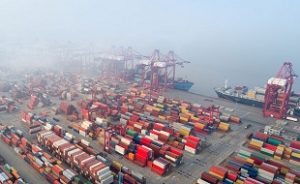
Choosing a security system can seem complicated, particularly when factoring in the different environmental conditions to which a camera can be subjected. It’s important to take environmental factors into consideration to make sure a camera lasts as long as it should. Below are six questions businesses should ask themselves before investing in a new surveillance system.
What type of environment will the cameras be in?
Outdoor cameras require protection from moisture and dust, but most cameras are designed with adequate protection from the basic elements. It’s important to look beyond the basics to precisely what’s in the air and water surrounding the camera. Seawater is a perfect example of a corrosive environment that can destroy a camera prematurely if the camera is not designed for it. Indoor environments can be just as corrosive when aggressive chemical cleaners are used to sanitize all surfaces. Stainless steel housings are a necessity for cameras in marine or other harsh chemical environments. The bubble in front of the lens is also vulnerable, so a material like nylon is often used to resist corrosion in front of the lens.
Will the camera be fixed, or is it mounted on a vehicle such as a bus or train?
A waterproof camera on the side of a building is different from a waterproof camera on a bus going through a high temperature, high pressure steam wash. It’s for this reason that there are many different standards ratings levels for both solid particle and liquid ingress protection. IP6K9K is currently the highest rating for both dust and protection from high-temperature pressure washing. Review the standards and make sure they match your conditions. Vibration and shock are also important considerations in moving environments. Look for cameras with gyroscopic sensors and digital image stabilization (DIS) to reduce motion blur and deliver sharp, stable images.
What types of temperature variations will be encountered?
Hot and cold temperatures and their effects on recording equipment can be important, but even more important are the effects of rapid changes in temperatures. A bus parked in a freezing parking lot that gets started and suddenly has all the heaters running on full can quickly fog up a camera lens. Some cameras have built-in heaters to minimize temperature extremes and keep lenses clear.
What about recording equipment in harsh mobile environments?
A mobile NVR (Network Video Recorder) has its own challenges in vehicle environments. Operating temperatures are extreme and fan-cooled systems can quickly fail because of dust, which makes it important to find a mobile NVR that utilizes a fan-less design. Rugged mobile NVR units typically employ large heat-sinks (fins) in the outer housing to dissipate heat without the use of a fan. Keeping dust and debris away from sensitive electronics is critical to long life. Look for a mobile NVR with no moving parts, including the storage drives.
What type of lighting conditions will the camera operate in?
Most cameras can deliver solid performance in daylight. It’s more difficult for cameras when the light disappears. IR (infra-red) light is one answer, but most IR lights have a fixed distance of illumination and can make it difficult to discern details when color is lost. It’s possible to choose cameras with extreme low-light sensitivity that can still provide reliable color information. In general, look for cameras with a wide dynamic range (WDR of 120-150dB is ideal) that can consistently reproduce detail from shadows even in high-contrast lighting conditions. Frames per second (fps) can impact WDR performance. Look for a camera with enough fps to deliver the WDR you require without sacrificing smooth motion capture.
Can rugged environments also benefit from advanced analytics?
Just because the environment is rugged, don’t forget on-edge analytics. Intelligent in-camera analytics are a crucial part of any surveillance system, and rugged environments benefit from both video and audio analytics when it comes to alerting staff and finding important events. Beyond basic motion detection, a good suite of tools should include behavior analytics such as appear/disappear and loitering. Passing a virtual line, enter/exit, and directional detection are also important. A good security camera should know if it’s been tampered with or if it’s just a foggy day. Beyond video analytics, in-camera audio analytics are important tools that can detect glass breaks, explosions, gunshots or screams and send immediate notifications to a VMS. Lastly, there are analytics such as people counting, heat maps and queue management that can provide valuable market and business intelligence depending on your unique requirements.











